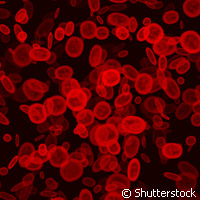How malaria parasites use camouflage to beat the system
Malaria parasites use camouflage to beat the immune defences of pregnant women, new international research shows. Presented in the journal Proceedings of the National Academy of Sciences (PNAS), the study was funded in part by the EVIMALAR ('Towards the establishment of a permanent European virtual institute dedicated to malaria research') project, which is backed under the Health Theme of the EU's Seventh Framework Programme (FP7) to the tune of EUR 12 million. The findings could help improve our understanding of this often fatal disease and lead to a viable vaccine. Researchers from the Copenhagen University Hospital (Rigshospitalet) and the University of Copenhagen in Denmark, in cooperation with the University of Ghana in Legon, Ghana, and the Liverpool School of Tropical Medicine in the United Kingdom, have found that malaria parasites attack the placentas of expectant mothers by hiding from the body's immune system. 'We have found one likely explanation for the length of time it takes for the expectant mother's immune defences to discover the infection in the placenta,' explains lead author Lea Barfod, who is working with Professor Lars Hviid at the Centre for Medical Parasitology at the University of Copenhagen. 'The parasites are able to assume a camouflage that prevents their recognition by the immune system antibodies which would otherwise combat them,' the graduate student adds. 'So although the immune system has all the weapons it needs to fight the infection of the placenta, these weapons are ineffectual simply because the enemy is hard to spot. Ironically the camouflage also consists of antibodies, but of a type that does not help to fight infection.' Around 8.3 % of the human population is infected with malaria. The parasite is found in 500 million people, and 1 million succumb to the disease each year, the researchers say. This disease is very hard to beat because the parasite is unfailing in its objective to outsmart the human immune system. Red blood cells provide the initial hiding spot for the parasite when it enters the system, and the problem is exacerbated by the fact that the immune system does not fight the infected cells because the spleen is the organ that usually filters the cells. In order to circumvent this filter, the parasite ejects a protein hook that attaches to the inner wall of the blood vessel. So even if the antibodies of the immune system damage the hook, the parasite could produce another 60 hooks to beat the system. The end result is that the parasite propagates and infects a growing number of red blood cells that usually transport nutrients and oxygen in the body. 'In an advanced version of hide-and-seek the parasites keep looking for new ways of preventing the antibodies from recognising them,' Professor Hviid says. 'It is a kind of urban guerrilla war in which the fighting is conducted from house to house. One example is the ability of the parasites to hide in the placenta. The first time an African woman conceives her placenta provides a new opportunity for the parasite to hide: a new house, so to speak, and in a way that prevents discovery by the immune system. It takes time for the immune defences to react to the new threat, and meanwhile the camouflaged parasite harms the woman and her unborn child.' The researchers say they will investigate whether the malaria parasite uses its camouflage at other stages of an infection. 'Perhaps it is not only the parasites in the placenta that are capable of hiding like this,' Professor Hviid says. 'It takes the body a surprisingly long time to develop protection from malaria, and perhaps the trick we have just discovered is part of the explanation. It is important for us to find out if this is the case in order to help us to understand malaria in general, but also to help us in our efforts to develop a vaccination. We have plenty of work to be going on with.'For more information, please visit:PNAS:http://www.pnas.org/Copenhagen University Hospital (Rigshospitalet):http://www.rigshospitalet.dk/RHenglish/Menu/University of Copenhagen:http://www.ku.dk/english/
Countries
Denmark, Ghana, United Kingdom



